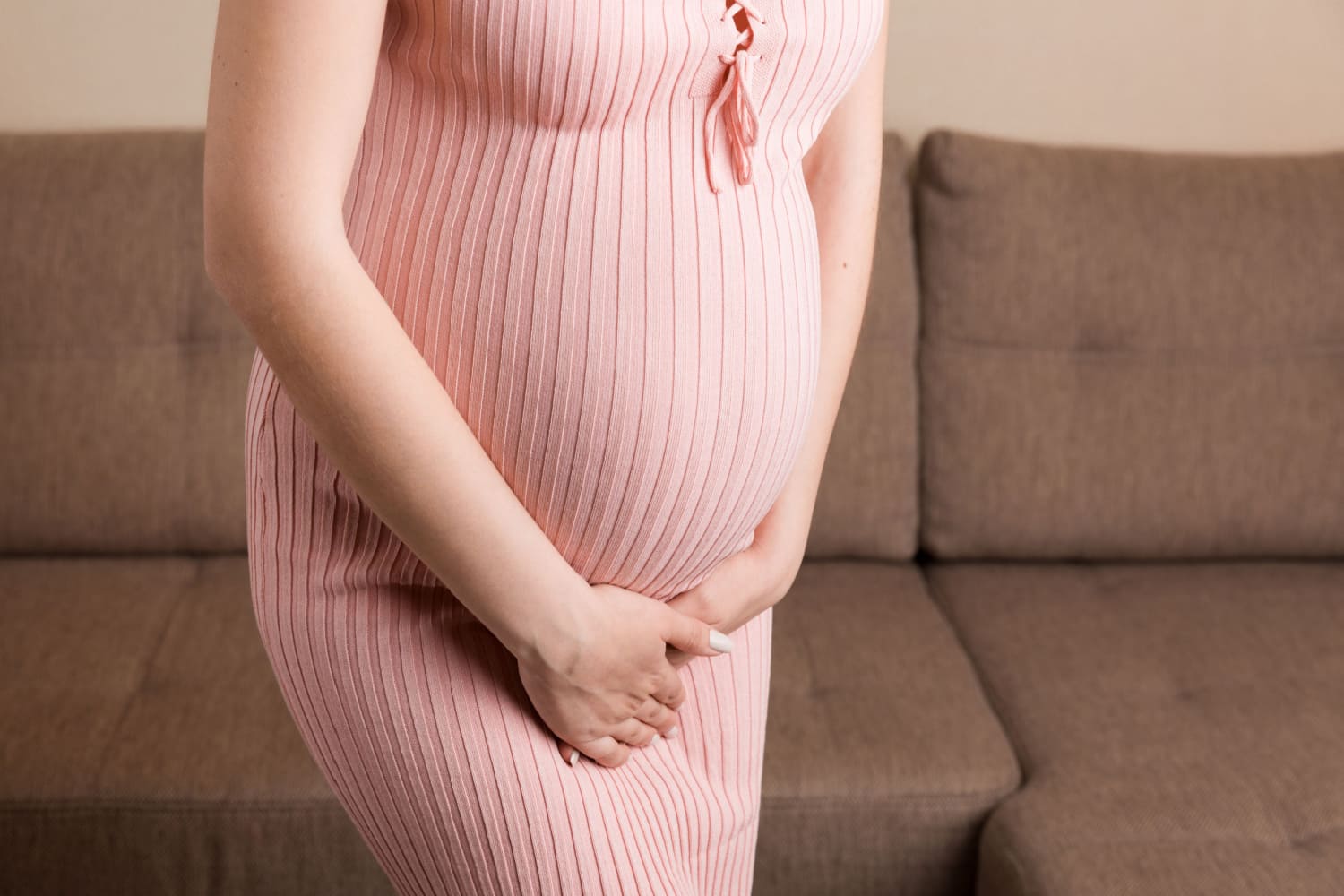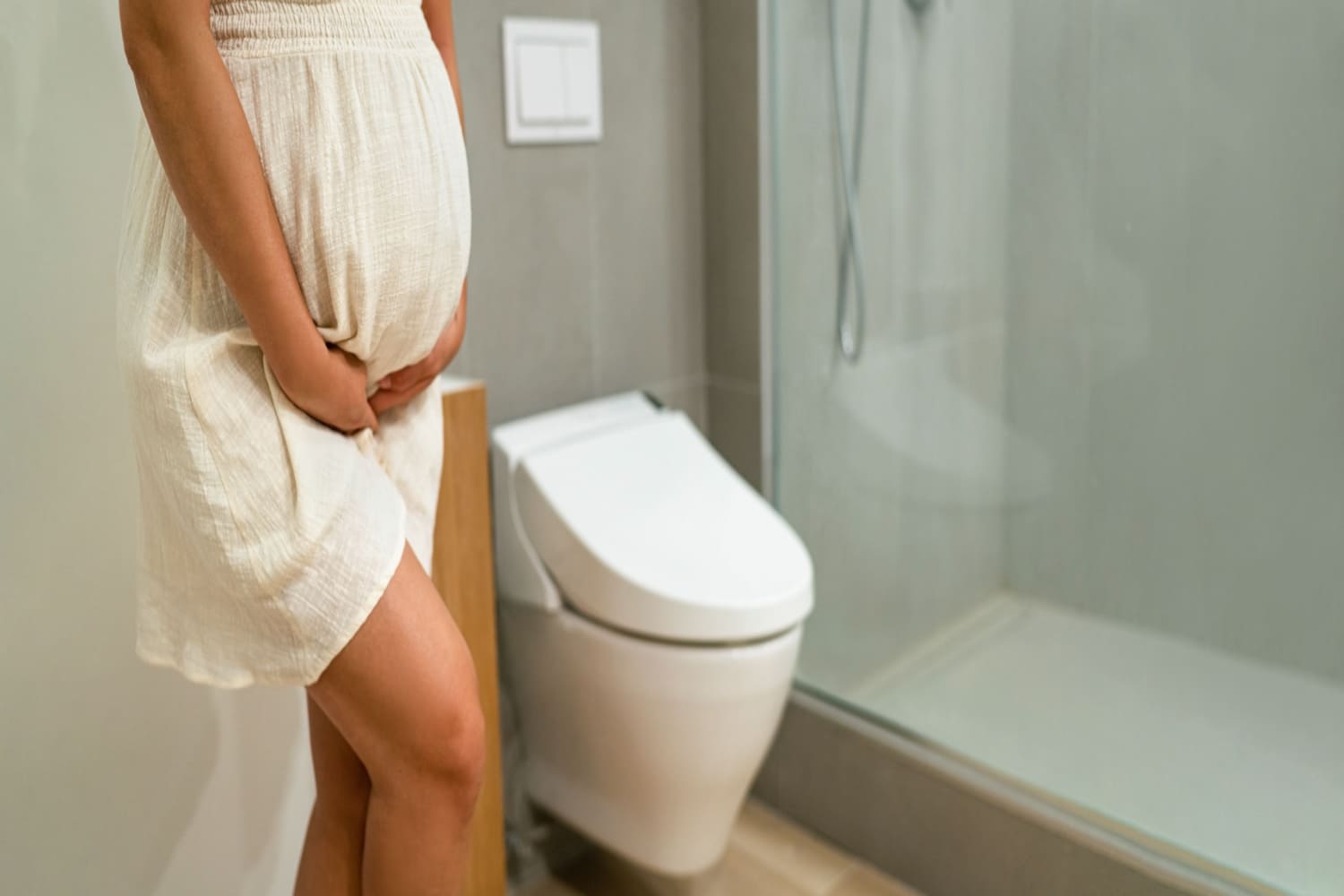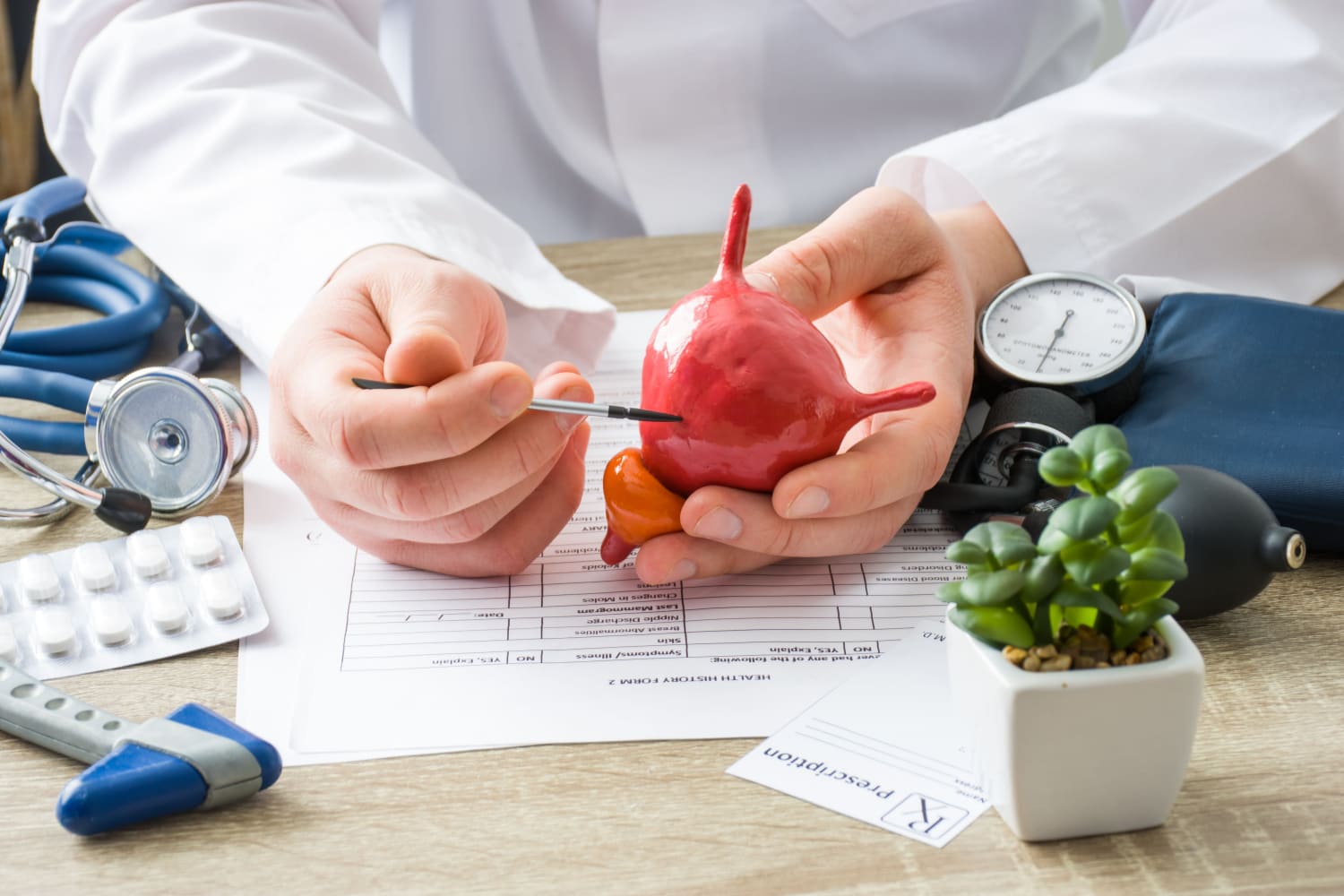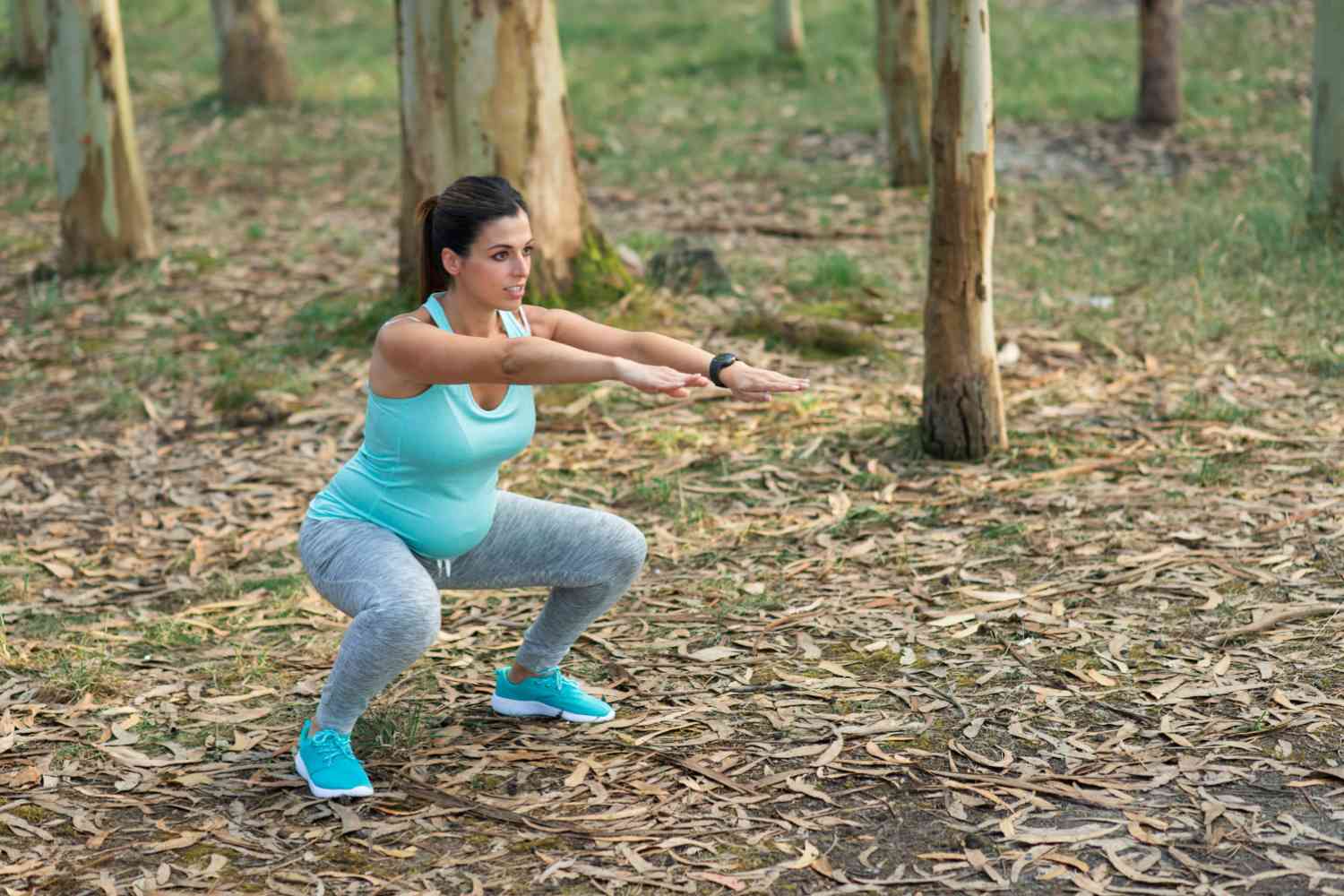
Urinary Incontinence During Pregnancy – Causes, Symptoms, and Treatment Options

Urinary incontinence or loss of bladder tenancy is a worldwide condition during pregnancy. It affects most pregnant women considering their pelvic region becomes weak at that time. It could moreover be considering your growing tumor exerting pressure on the urinary bladder, which makes it nonflexible to store plane a tiny value of urine. Whenever, you cough or sneeze, you tend to leak a few drops of urine involuntarily which is very worldwide during pregnancy.
Practicing Kegels from the whence can help strengthen the pelvic floor. Strong pelvic muscles help you tenancy urine leakage and moreover squire you during labor. However, if urinary incontinence is troubling you during day-to-day activities, do not hesitate to seek a doctor’s consultation. This vendible gives a gist well-nigh the causes, and symptoms of urinary incontinence during pregnancy.
In This Article
- What is Urinary Incontinence During Pregnancy?
- Is It Worldwide to Leak Urine During Pregnancy?
- Causes of Urinary Incontinence During Pregnancy
- Diagnosis of Urine Leakage/Incontinence During Pregnancy
- How to Identify Urine Leak or Amniotic Fluid Leak During Pregnancy?
- How to Prevent Urinary Incontinence During Pregnancy?
- Treatment Options For Pregnancy Incontinence
- Will Pregnancy Incontinence Protract Post-Birth?
- Top 4 Exercises For Urinary Incontinence During Pregnancy
- When Should You Consider Seeing the Doctor?
- FAQ’s
What is Urinary Incontinence During Pregnancy?
Urinary incontinence during pregnancy refers to losing the worthiness to tenancy the bladder. Your bladder is placed just unelevated the uterus. As your pregnancy progresses, your uterus starts exerting pressure on the bladder which makes it difficult for you to hold the urine. With this, you may see yourself leaking a few drops of urine when you cough, sneeze, laugh, or do some physical activities during your second and third trimesters of pregnancy.
Is It Worldwide to Leak Urine During Pregnancy?

Urine leakage or incontinence is worldwide in the second and third trimesters of pregnancy. While some women get rid of this trouble without the delivery, some women protract to wits this for a few increasingly weeks without childbirth.
Causes of Urinary Incontinence During Pregnancy
Urinary incontinence during pregnancy is caused due to the uneaten weight that you carry. However, here are some of the other possible causes of urinary incontinence during pregnancy
1. High Pressure
The physical movement exerts uneaten pressure on the bladder, which causes leakage of urine. A pregnant woman may wits urine leakage when sneezing, coughing, and exercising.
2. Hormones
During pregnancy, the hormonal rush can yo-yo your body’s functioning by relaxing the ligaments which may lead to urinary incontinence.
3. Medical Conditions
Several medical conditions, such as multiple sclerosis, diabetes, and prolonged medication for anxiety, can rationalization urinary incontinence.
4. Urinary Tract Infection (UTI)
Urinary tract infection is widespread nowadays. It can moreover lead to urinary incontinence.
Diagnosis of Urine Leakage/Incontinence During Pregnancy
The most worldwide way to snift urine leakage is the urging of urination. You may have incontinence if you wits leakage of urine during coughing, sneezing, and other physical activities. Generally, urinary incontinence regresses or disappears without you unhook your baby, but if you are concerned well-nigh the inability of bladder control, do not hesitate to speak to your doctor. Doctors may perform regular tests to snift the medical reasons for urine leakage.
Here are a few worldwide tests that are used to diagnose urinary incontinence during pregnancy
1. Urinalysis and Urine Culture
A test to trammels UTI and sugar level. The test is often used to trammels urinary incontinence.
2. Bladder Stress Test
It mimics the unintentional urination that might happen when you giggle, cough, sneeze, or exercise. In a bladder stress test, the neck of your urinary bladder is slightly raised by a finger, or with any other instrument put into the vagina.
3. Pad Test
This test is very useful for checking urine leakage. An spongelike pad is given to the patient, which is weighed surpassing urine leakage and after.
Likewise, tests, such as urodynamic testing, uroflowmetry cystometry, etc., are performed to snift urinary incontinence.
How to Identify Urine Leak or Amniotic Fluid Leak During Pregnancy?
During pregnancy, a woman may finger like everything is leaking. The bladder becomes full, and you think it’s amniotic fluid leaking increasingly than urine. Also, the vaginal tissue produces fluid, so it is difficult to know whether vaginal fluid is leaking, amniotic fluid, or urine. Typically, urine leaking can be detected through odor. Amniotic fluid is white-flecked, odorless, having thoroughbred or mucus, and may saturate your inner garment.
Another way to determine whether amniotic fluid is leaking or urine is
- First, empty the urinary bladder
- Place the panty liner or sanitary pad inside the underwear
- After a few minutes or hours, snift fluid color
- If it is yellowish, then probably it’s urine
- If the fluid is whitish-flecked and mucus, it may be amniotic
[Read : How Will I Know If I Am Leaking Amniotic Fluid?]
How to Prevent Urinary Incontinence During Pregnancy?
You can prevent pregnancy incontinence by making a few changes in your nutrition and daily routine.
1. Stave Caffeine
Because caffeine can complicate the issue during pregnancy.
2. Do Not Cut Lanugo on Water
Because vaporization is the main gateway for urinary tract infections(UTI).
3. Try Kegel Exercises or Pelvic Floor Muscle Tightening Exercises
They can help to prevent bladder tenancy issues. If the condition lasts longer and worsens, it is well-considered to seek a professional doctor.
Treatment Options For Pregnancy Incontinence

There are several treatment options misogynist to deal with pregnancy incontinence. Here are a handful of tips and treatments that help to modernize your condition.
1. Bladder Training
Bladder training is very salubrious in treating urinary incontinence. The aim is to tenancy the urge to urinate and wait urination. Double voiding is a technique that helps to strengthen the pelvic floor. In this technique, the patient must wait for a few minutes and then urinate again. The technique helps modernize muscle strength and treat urinary incontinence.
2. Medications
If regular remedies don’t work, doctors may prescribe some medications to treat urinary incontinence. It helps wifely lanugo an overactive bladder and helps women be at ease. Some other oral drugs that your doctor suggests may moreover help fill up the bladder and reduces the urge to urinate which usually is followed by urine leakage.
3. Surgical Procedure
Surgical media procedure is often recommended to help patients suffering from lattermost loss of bladder control.
- Sling procedure (mesh inserted underneath the bladder neck to support urethral pipes)
- Colposuspension (lifting bladder neck to relieve the stress occurring due to incontinence)
- Artificial sphincter (inserted into the vagina to tenancy urine flow)
However, medical intervention should be the last option during your pregnancy. Pregnancy urinary incontinence is quite common. You can prevent this or tenancy this from occurring by pursuit a few exercises and nutrition changes.
Will Pregnancy Incontinence Protract Post-Birth?
Pregnancy incontinence fades yonder within a few weeks without the baby’s delivery. As soon as the tissues recover and stretch muscles when to normal, the incontinence without childbirth recovers. However, in some cases, it may take up to months to fully recover. In that case, you can get help from doctors to stave such situations.
Top 4 Exercises For Urinary Incontinence During Pregnancy

Here are a few exercises that can help modernize your condition during pregnancy
1. Kegels Exercises
This exercise helps to strengthen your pelvic floor. Kegels exercise is salubrious during pregnancy and without pregnancy. To do the kegel exercise, focus on the pelvic muscles that help to hold urine. Squeeze pelvic muscles for ten seconds and relax them. Do at least five to ten sets of exercises every day. Doing this exercise regularly during pregnancy is helpful to ease lanugo labor.
[Read : Top 5 Benefits of Kegels during Pregnancy]
2. Vitals Breathing
Keep the hands on your abdomen, your lower when lifted, and your legs. As you gently inhale through the nostril and let the stomach expand, alimony your spine and shoulders motionless. Squeeze in your stomach muscles and move your navel into the spine as you wrack-up via your lips. The exercise helps strengthen the abdominals.
3. Elevators
Sit down, supporting your lower when and hands on the upper vitals and one hand near the navel. Inhale and exhale air and count to 30. Practice these squeezes to strengthen the abs and the urinary bladder muscles.
4. Squats
Squats are moreover salubrious in dealing with urinary incontinence. Deep squats or sumo squats are helpful in strengthening the pelvic floor, legs, and abs.
[Read : Squats During Pregnancy]
When Should You Consider Seeing the Doctor?
Many women don’t like to discuss urinary incontinence. Still, if the condition is worsening and your incontinence is not in tenancy and is well-expressed your life, it is well-considered to proceed with medical translating from a reputable doctor. Incontinence can weaken the knees and negatively impact your day-to-day life.
Urinary incontinence is very worldwide during pregnancy. Usually, urinary incontinence gets largest and disappears without you unhook the baby. However, sometimes the state lasts longer and may stupefy women throughout their life. In that case, consult your doctor and take towardly treatment from them for a largest cure.
FAQ’s
1. In What Week of Pregnancy is Urinary Incontinence Very Common?
At 10-14 weeks of pregnancy and 36 weeks of pregnancy, urinary incontinence is very common.
2. How Can I Stop Pregnancy Incontinence?
You can not do anything to stop pregnancy urinary incontinence. It is worldwide to leak small amounts of urine during the second and third trimesters considering of the pressure exerted on your bladder. However, practicing kegel exercises and pelvic floor exercises can help prevent and tenancy pregnancy incontinence.
3. How Can I Treat Pregnancy Incontinence at Home?
You can tenancy pregnancy incontinence at home by performing exercises such as Kegel and pelvic to strengthen pelvic muscles. Take a well-balanced diet, stave heavy lifting, lose glut weight, and quit smoking.
Read Also: Bloating During Pregnancy – Causes and Tips For Relief
The post Urinary Incontinence During Pregnancy – Causes, Symptoms, and Treatment Options appeared first on Being The Parent.


